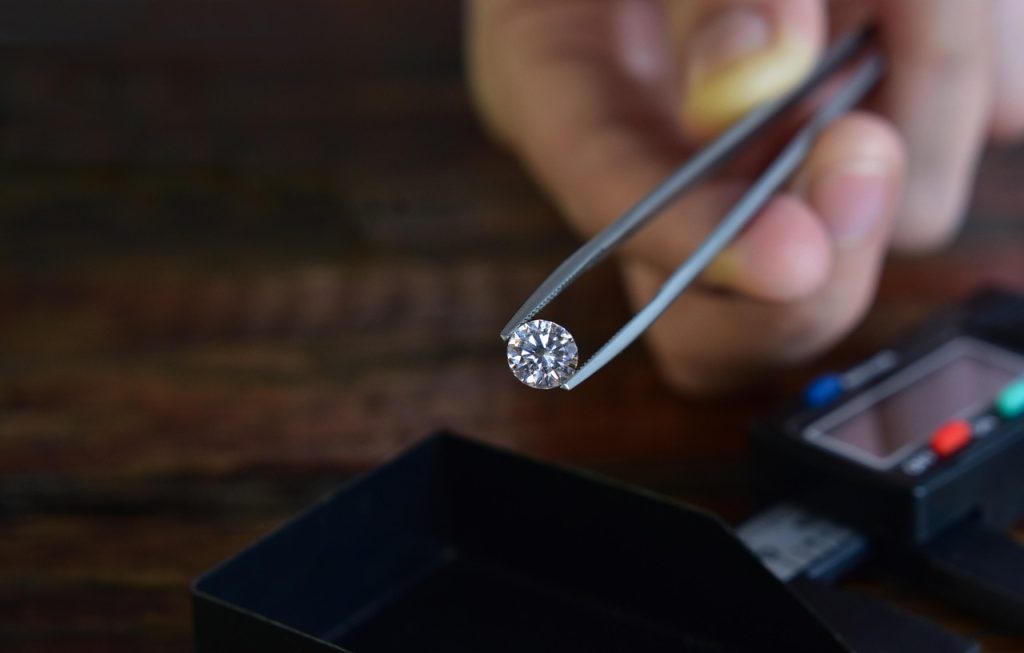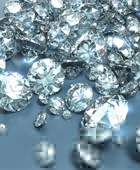The Relationship Between Economic Cycles and Diamond Demand
Economic cycles play a critical role in shaping the demand for diamonds, influencing prices across various market segments. During periods of economic expansion, consumer confidence tends to rise, leading to greater disposable income and increased spending on luxury goods, including diamonds. This heightened demand can drive diamond prices upward, especially for high-quality stones with desirable characteristics. Conversely, during recessions or economic slowdowns, consumers often prioritize essential goods over luxury purchases, leading to a drop in demand for diamonds. This can result in price stagnation or even significant declines, particularly in the retail and resale markets. Buyers may find more favorable prices during downturns, while sellers may struggle to achieve strong returns. For investors and industry professionals, understanding the macroeconomic environment is crucial to making informed decisions about timing purchases or sales of diamonds. Monitoring indicators such as GDP growth, consumer sentiment, and retail sales can offer valuable insights into potential shifts in demand and pricing across global diamond markets.

Inflation and Its Impact on Diamond Pricing
Inflation can significantly impact diamond prices, both in the short term and over extended periods. As inflation rises, the purchasing power of currency diminishes, often prompting investors to seek assets that can preserve value. While gold is traditionally viewed as a hedge against inflation, diamonds have also attracted interest as a portable, tangible store of wealth. In an inflationary environment, demand for investment-grade diamonds may increase, pushing up prices for high-quality stones with strong grading reports. However, inflation can also increase the cost of production and distribution within the diamond supply chain, including mining operations, cutting, polishing, and transportation. These rising costs can contribute to higher wholesale and retail prices. On the consumer side, inflation often leads to reduced discretionary income, which can dampen demand for luxury goods despite rising prices. For sellers, this creates a complex pricing environment where certain segments may benefit while others suffer. Buyers need to consider not only current prices but also broader economic signals that might indicate further inflationary pressures or a return to price stability.
Currency Fluctuations and Their Role in the Diamond Trade
Currency exchange rates exert a powerful influence on the global diamond industry, particularly given the international nature of the trade. Diamonds are often priced in U.S. dollars, so fluctuations in major currencies like the euro, yen, or Indian rupee can significantly affect affordability and profitability for international buyers and sellers. For instance, if the U.S. dollar strengthens relative to other currencies, diamonds become more expensive for buyers using weaker currencies, potentially reducing demand and slowing sales. On the other hand, a weaker dollar may stimulate demand abroad by making diamond purchases more affordable, which can help drive up prices. Currency trends also affect producers and exporters in key diamond-producing countries such as Russia, Botswana, and South Africa, where local currency fluctuations can impact production costs and export revenue. For buyers, keeping an eye on currency movements can help identify optimal moments to make purchases, especially when favorable exchange rates reduce overall costs. Sellers, meanwhile, may need to adjust pricing strategies or hedge currency risks to remain competitive in fluctuating markets.
Interest Rates and Consumer Spending on Diamonds
Interest rates, set by central banks, influence borrowing costs, savings returns, and overall economic activity—all of which affect diamond consumption. When interest rates are low, borrowing becomes cheaper, encouraging consumers to take out loans or finance purchases, including luxury goods such as diamond jewelry. Retailers often see increased sales during such periods, which can drive up diamond prices due to higher demand. Moreover, investors may seek alternatives to low-yield savings, turning to tangible assets like diamonds in search of better returns, thus contributing further to price growth. Conversely, when interest rates rise, the cost of borrowing increases and consumer spending typically slows. Discretionary purchases like diamond jewelry may decline as consumers redirect funds to debt repayment or savings. This can result in softer market conditions and downward pressure on prices. For sellers, high-interest environments may lead to longer inventory turnover and a need to offer more competitive pricing. Buyers may benefit from these conditions by acquiring diamonds at reduced prices, though financing options may be less favorable.
Global Economic Uncertainty and Market Volatility
Periods of global economic uncertainty, such as those caused by geopolitical tensions, pandemics, or financial crises, can cause significant volatility in diamond prices. In uncertain times, investors and consumers alike tend to exhibit caution, often delaying luxury purchases or redirecting funds into safer, more liquid assets. As a result, demand for diamonds can experience sharp declines, leading to oversupply and price reductions in the marketplace. This was observed during the COVID-19 pandemic, which disrupted global supply chains and dramatically reduced consumer demand, especially in major markets like the U.S., China, and India. However, certain segments of the diamond market may react differently to uncertainty. Investment-grade or rare diamonds may attract buyers seeking long-term value, especially if traditional financial instruments appear unstable. Moreover, supply chain disruptions may reduce the availability of new inventory, which can offset falling demand and help support prices. Buyers and sellers need to stay informed about global events and their potential impact on both supply and demand. Timely decisions based on geopolitical and macroeconomic analysis can help navigate periods of heightened risk more effectively.

Supply Chain Dynamics and Economic Influences
The structure and efficiency of the diamond supply chain are deeply affected by economic trends, which in turn impact pricing at every stage. From mining operations to cutting centers and retail distribution, each link in the chain is vulnerable to economic shifts such as rising labor costs, fluctuating fuel prices, and regulatory changes. During periods of economic expansion, mining companies may increase output in anticipation of higher demand, which can initially lead to an oversupply and moderate prices until equilibrium is restored. Conversely, economic downturns can lead to production cuts, delayed mining projects, or even closures, which can restrict supply and potentially support higher prices in the future. Midstream players, such as polishers and distributors, also react to credit conditions; tighter lending due to economic contraction can limit their ability to purchase rough diamonds or maintain inventory levels. This ripple effect can impact availability and pricing at the retail level. Buyers and sellers should monitor logistical issues, inventory flows, and the health of key suppliers, particularly in countries with heavy economic exposure to the diamond trade such as India and Belgium.
Consumer Trends and Shifting Economic Sentiment
Consumer behavior is closely tied to the broader economic climate, and shifts in sentiment often precede or follow changes in diamond demand. In times of economic growth, consumer confidence typically rises, leading to an increase in luxury spending—including on diamond engagement rings, anniversary gifts, and custom jewelry. Market trends often favor larger or higher-grade stones during such times. In contrast, during uncertain or declining economic conditions, consumers tend to become more price-conscious, often opting for smaller stones or lab-grown alternatives, which can undercut prices for natural diamonds. Social and generational shifts—such as millennials and Gen Z prioritizing sustainability and cost-effectiveness—can also amplify the impact of economic changes on diamond purchasing habits. For sellers, understanding how economic trends intersect with evolving consumer preferences is vital to maintaining profitability. Buyers, meanwhile, can benefit from recognizing when market sentiment has led to price reductions or inventory surpluses that present opportunities for strategic purchases.
Government Policy and Trade Regulations
Economic policy and trade regulation are influential forces that can shape the diamond market at both national and global levels. Tariffs, import/export restrictions, and sanctions can affect the movement of diamonds between countries, altering supply levels and price structures. For example, sanctions against Russian diamond producers in response to geopolitical events have affected global rough diamond availability, particularly for mid-range stones. Such restrictions often lead to price increases in alternative supply channels due to reduced competition and lower inventory. At the same time, regulatory shifts around transparency, ethical sourcing, and conflict-free certifications—such as those promoted by the Kimberley Process—can impact the operational costs of producers and the perceived value of diamonds in the eyes of consumers. Economic trends also influence how governments support or restrict diamond mining in their territories through taxation and investment incentives. Buyers and sellers need to remain aware of current and emerging regulations, as these can dramatically affect costs, supply reliability, and reputational risk across the diamond value chain.
Technological Advancements and Economic Displacement
Technology, while not an economic trend in itself, often intersects with economic conditions to reshape the diamond market in significant ways. In recent years, economic pressure to find affordable alternatives has fueled the rise of lab-grown diamonds, which now represent a growing share of the market. These diamonds are chemically identical to natural ones but are often 30-40% less expensive, offering consumers high perceived value during uncertain economic times. Economic trends also affect the adoption of blockchain and AI technologies in diamond verification and sales platforms, enhancing transparency and buyer confidence. During economic downturns, retailers may increase reliance on e-commerce platforms and digital marketing to maintain sales, often leveraging data analytics to optimize pricing and inventory. For sellers, staying competitive may require embracing new technologies that improve operational efficiency and customer trust. Buyers benefit from these advancements through increased price transparency and access to more diverse offerings. In both cases, technological adaptation in response to economic displacement can strongly influence pricing and market dynamics.
Strategic Implications for Buyers and Sellers
Understanding how economic trends affect diamond prices provides valuable strategic advantages for both buyers and sellers. For buyers, analyzing macroeconomic indicators—such as interest rates, inflation, currency strength, and consumer sentiment—can help identify the best times to purchase diamonds, whether for investment or personal use. Buyers who are well-informed about market cycles can often secure better value by timing purchases during price dips or economic uncertainty. For sellers, tracking economic conditions enables better forecasting of demand, pricing strategies, and inventory planning. Sellers who adapt to changing conditions—such as shifting toward lab-grown inventory in response to consumer behavior or investing in traceability tech during times of heightened regulatory scrutiny—can maintain resilience and competitiveness. Both parties should view diamonds not only as luxury items but also as commodities subject to the same economic forces that govern other tangible assets. A holistic approach that integrates economic literacy with market knowledge is essential for navigating the complexities of the modern diamond industry.




